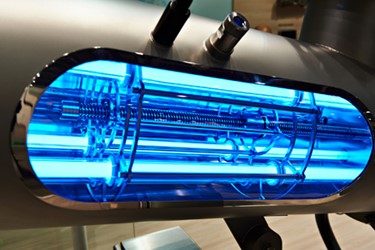Overcoming A Lack Of Product Differentiation – Lessons Learned From The Water Disinfection Market

By Bill King

For years, manufacturers in the water market have followed a similar marketing process to tell the world about their new products and services. In fact, I’d argue that this traditional marketing approach has been applied the world over across all industrial markets by manufacturers introducing new products.
Having learned customer needs and developed a unique product to solve them, Marketing has armed Sales with content that describes the unique features of the new product and identified third party media channels such as tradeshows and print publications to push that content out to the market. The prospective customer has involuntarily consumed this media, predominantly display ads inserted between pages of editorial content that the customer is voluntarily reading.
Take UV disinfection for example. The disinfection of drinking water using UV light dates back to the early part of the 20th century however it wasn’t until the 1990s when wide-scale use of UV water treatment began to show up in our industry. Manufacturers learned that customers were concerned about the byproducts of chemical disinfection and there was a growing EPA focus on cryptosporidium and giardia that UV light is well suited to treat.
And so UV disinfection was marketed to drinking water utilities around its unique features, namely its non-chemical nature and its effectiveness in disinfecting protozoa. Manufacturers set up booths at ACE and started placing display ads in water-industry magazines.
As more manufacturers have started creating UV disinfection products, Product Development and Marketing departments have adjusted to find new unique ways to differentiate their UV solution from their competitors. Examples include moving into new applications such as wastewater disinfection and water reuse or new product features such as easier maintenance and longer bulb lives. Booths have been set up at additional tradeshows such as WEFTEC and more display ads from more manufacturers focused on the new features have been placed in magazines.
The emerging process problem with the traditional marketing approach however is evident. As more manufacturers have entered the UV field and begun to replicate each other’s features, it has become very difficult for any given manufacturer to create or maintain a product lead. And without real differences in products, companies’ traditional marketing has begun to look and sound the same to the pool of potential customers.
In response to this difficulty of differentiation on product features alone, smart marketing people are realizing that they need to move their marketing focus away from features and instead, focus on customers’ needs and desires. These can be operational challenges and pain points or simply the identification of emerging trends that could affect the utility in the future.
In the UV disinfection space, the promotion of unique bulb cleaning technology or low energy UV bulbs works in the short term until the competitor set catches up or surpasses you. The dominant player in the future of water disinfection will be the company that rises above the fray and establishes its brand authority as the thought-leader on a drinking water utility’s disinfection-related challenges.
